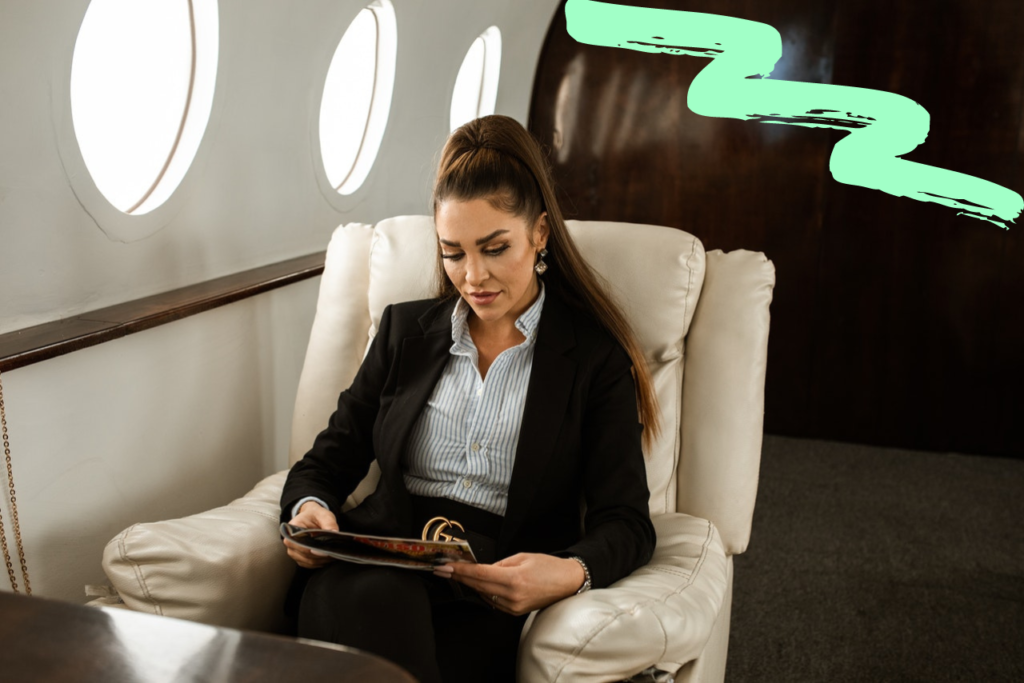Let’s face it; travelling long distances with a vein disease can be uncomfortable, but in some cases, further health complications can arise. Sitting still for extended periods of time – particularly when flying – can affect blood circulation and even lead to the development of blood clots. As such, long flights can be a risk factor for those suffering from vein problems.
Some of the most common vein issues include:
- Venous insufficiency
- Excessive blood clotting
- Varicose veins
- Spider veins (also known as thread veins)
- Deep vein thrombosis
- Superficial venous thrombosis
Fortunately, there are some precautions you can take to ensure that your trip isn’t impeded by discomfort. With that in mind, if you’re flying with vein problems, here are 8 steps to a more comfortable journey.
Stay Hydrated
Staying hydrated when you’re travelling is vital, and drinking water during your journey will help to keep your blood thin. It also may increase the need to take trips to the loo. Whilst this is usually annoying, on a flight, in particular, a little exercise is essential – but more of that later.
While it’s always tempting to start the holiday early at the airport at the champagne and have a few of those mini bottles of wine served up on the flight, you should avoid alcohol as it counters the hydration effect of all that water you’re going to be drinking.

Ask For Extra Leg Room
According to the team at Metro Vein Centers, it’s a good idea to bring a letter from your doctor with you explaining your condition and why you need extra leg room, but be sure it also states that you are fit to travel. It’s also a good idea to try and get to the desk earlier to ask for an exit seat – although if you’re deemed too weak to sit there, you may be refused this position. A fine balancing act, indeed.
Keep A Consistent Diet
Once you’ve arrived at your holiday, while of course you’re there to relax and indulge, it’s a good idea to keep your diet consistent. This is because your dietary habits could contribute to the development of vein disorders.
Your doctor may recommend limiting your intake of red meat and dairy, At the same time, other foods, such as fibre-rich foods, fruits including strawberries and mangoes, and vegetables like broccoli and brussels sprouts, can help improve your condition.
Read: 7 IDEAL tips for sleeping on the plane
Exercise In Your Seat
As mentioned, sitting in a cramped position for a long period of time increases your risk of a blood clot, so it’s important that you exercise, even while on board.
Exercise helps increase blood circulation to your legs and gets your heart pumping. This reduces the risk of blood pooling in your legs, as well as limiting the amount of potential blood backflow from damaged valves.
Even walking can help boost vein function, so make sure you get up and walk around at least once an hour, especially on long flights, to keep the blood circulating.
Additionally, you can ask your healthcare provider for exercise recommendations specifically meant to benefit vein disorders. Some common exercises include:
- Foot pumps
- Ankle circles
- Leg lifts
- Knee Pulls
Be sure to avoid extended periods of standing and sitting in one place, making sure you change position every so often to encourage continued circulation.
Consider Wearing Compression Socks
Wearing compression socks while in the air can help prevent post-flight swelling. Compression socks are essentially socks that are designed to improve the circulation of blood in your legs. They do this by squeezing your legs tighter than normal socks. Additionally, they are available in varying lengths, allowing doctors to utilise them to treat a number of vein disorders in your legs. They’re even available as full-length compression tights.
By boosting your blood circulation, compression socks basically reduce the risk of blood pooling and clotting in your legs. If blood pools, there’s a high risk of you developing a number of different vein conditions, including deep vein thrombosis, varicose veins, and inflammation of the veins. Additionally, it boosts the chances of damage to the walls and valves of your veins and even of you developing blood clots.
Your doctor will recommend how high your compression socks should be and how frequently you should wear them. Additionally, they may also recommend a brand of compression socks, as the amount of compression varies based on the type and make.
Read: 6 IDEAL inflight hacks to make your flight experience more comfortable

Don’t Forget Your Prescriptions
Blood thinners are used to prevent the recurrence of clots in the future and prevent any existing clots from growing bigger. Depending on the severity of your disorder, your doctor may recommend that you take blood thinners for an extended period of time.
If you’ve been prescribed medication by your doctor, be sure to bring them with you. While it’s unlikely you’ll face any issue bringing your medication on board, it’s a good idea to keep your pills in the original bottle.
Remember to ask your doctor for a certificate confirming the disease and your prescription. A prescription given to you by your doctor in your country is valid in all EU countries. However, a medicine prescribed in one country might not be available in another, or it may have a different name.
Keep Legs Elevated When & Where Possible
While it may be hard to do this while travelling, try and keep your legs elevated where possible. This is one of the most common treatment plans for people suffering from less severe venous disorders. When elevating your legs, you should ideally raise them to or above the level of your heart if possible.
Doing so prevents the blood in your legs from collecting and boosts blood circulation. You’ll be happy to find several ways to elevate your legs without disrupting your daily schedule, including:
- Propping your legs on a footrest or footstool while sitting.
- Raising your legs above the level of where your heart is when lying down – you can do this by propping your feet on a pillow or up against a wall for support.
If you can’t put your feet up easily, you can place them on the floor, make sure that they’re laid flat. Alternatively, you can cross them as well, but only with your ankles. When you cross from the top of your legs using your knees, this blocks blood flow to and from your legs because your veins get squeezed.
Know The Signs Of A Blood Clot
There are several symptoms that can serve as warning signs:
- Swelling of the legs, ankles or calves
- Redness or discoloration of skin
- An increased warmth over the skin
Should you be experiencing any of these, it’s best to speak to a qualified health professional straight away.
*This article is not intended to replace medical advice, diagnosis or treatment given by a qualified mental health professional. Instead, this article only provides information, not advice. For any medical enquiries, always consult your GP first*





